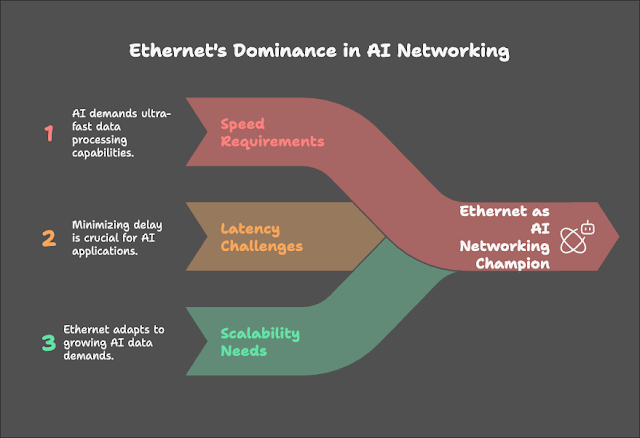Manifestation Made Easy: Transform Your Life
Imagine having the power to transform your life by harnessing the energy of Positive Thinking and the Law of Attraction. Manifestation is the process of bringing your desires into reality by focusing your thoughts and emotions on a specific outcome.
By understanding and applying the principles of manifestation, you can unlock a world of possibilities and create the life you've always dreamed of. It's about aligning your energy with your desires and taking inspired action towards making them a reality.

Manifestation is not just about wishful thinking; it's a powerful tool that can help you overcome obstacles, build confidence, and achieve your goals. In this article, we'll explore the ins and outs of manifestation and provide you with practical tips to get started on your journey.
Key Takeaways
- Understand the basics of manifestation and its potential to transform your life.
- Learn how to harness the power of Positive Thinking and the Law of Attraction.
- Discover practical tips to overcome obstacles and achieve your goals.
- Align your energy with your desires and take inspired action.
- Unlock a world of possibilities and create the life you've always dreamed of.
The Science and Psychology Behind Manifestation
Delving into the science and psychology of manifestation reveals the intricate mechanisms that make it work. Manifestation is a multifaceted process that involves the alignment of one's energy, mindset, and actions towards achieving a specific goal.
How Manifestation Works in the Brain
The brain plays a crucial role in manifestation through its ability to focus attention and rewire itself based on new experiences and thoughts. Mindfulness practices can enhance this process by training the brain to stay present and focused. Research in neuroscience has shown that consistent mindfulness practice can lead to changes in brain structure, particularly in areas related to attention and emotional regulation.
https://www.youtube.com/watch?v=9KtBXhiMJgw
The Quantum Physics Perspective
From a quantum physics perspective, manifestation can be understood through the concept of vibrational frequencies. Everything in the universe, including thoughts and emotions, vibrates at specific frequencies. The principle of energy alignment suggests that by matching our vibrational frequency to that of our desires, we can attract similar energies. This concept is supported by the law of attraction, which states that like attracts like.
Modern Research Supporting Manifestation Principles
Recent studies have begun to provide empirical evidence supporting the principles of manifestation. For instance, research on the effects of positive thinking and visualization has shown that these practices can lead to improved mental health and increased success in various areas of life. Spiritual growth and the development of a positive mindset are key components of effective manifestation practices.
- Studies on the law of attraction and its effects on mental and physical well-being
- Research on the neurological benefits of mindfulness and meditation
- The role of energy healing in manifestation practices
By understanding the scientific and psychological underpinnings of manifestation, individuals can harness its power more effectively, leading to profound transformations in their lives.
The Law of Attraction: The Engine of Manifestation
The Law of Attraction serves as the engine of manifestation, illustrating the direct relationship between our energy and the experiences we attract. This principle is based on the idea that like attracts like, and by understanding and applying it, we can transform our lives.
Understanding Vibrational Frequencies
Vibrational frequencies refer to the energetic signatures that everything in the universe emits. Every thought, emotion, and experience has its own unique frequency. By becoming more aware of our own vibrational frequency, we can begin to understand how it influences what we attract into our lives.

How Your Energy Attracts Similar Experiences
The energy we emit through our thoughts and emotions acts as a magnet, drawing similar experiences and circumstances into our reality. When we maintain a positive and uplifting energy, we're more likely to attract beneficial experiences.
Breaking the Cycle of Negative Attraction
To break the cycle of negative attraction, it's essential to become aware of our negative thought patterns and emotional responses. By shifting our focus towards positivity and practicing mindfulness, we can realign our energy and attract more favorable outcomes.
| Energy Type | Vibrational Frequency | Attracted Experiences |
|---|---|---|
| Positive | High | Uplifting, Beneficial |
| Negative | Low | Challenging, Unfavorable |
| Neutral | Medium | Mixed, Variable |
Setting Clear Intentions: Your Manifestation Blueprint
The process of manifestation begins with setting precise and powerful intentions. Intention setting is more than just wishing for something; it's about clearly defining what you want to manifest in your life.
Crafting Powerful Intention Statements is a crucial step in this process. An effective intention statement is positive, present-tense, and specific. For example, instead of saying "I don't want to be broke," a powerful intention statement would be "I am financially abundant and secure."
Crafting Powerful Intention Statements
To craft your intention statements, start by identifying your deepest desires. Ask yourself what you truly want to manifest in your life, whether it's related to career, relationships, or personal growth.
The 5-Step Process for Clarifying Your Desires
Clarifying your desires is a systematic process:
- Identify your desire
- Write it down in a positive and present-tense format
- Emotionalize your intention by associating it with a strong positive feeling
- Visualize your intention as if it has already happened
- Let go of attachment to the outcome
Creating a Sacred Intention Setting Ritual
Creating a ritual around your intention setting can amplify its effectiveness. This could involve meditation, journaling, or a specific ceremony that holds personal significance for you.
As Louise Hay, a renowned motivational author, once said, "The point of power is always in the present moment." This emphasizes the importance of being present and focused when setting intentions.
| Intention Setting Element | Description | Example |
|---|---|---|
| Positive Statement | Frame your intention positively | "I am worthy of love and respect" |
| Present Tense | Write as if the desire has already occurred | "I am successful in my career" |
| Emotional Connection | Associate a strong positive emotion | Feeling joy when thinking about your intention |

Visualization Techniques That Accelerate Manifestation
Unlocking the power of visualization can significantly accelerate your manifestation journey. Visualization is a technique used by many successful individuals to bring their goals into reality. By vividly imagining your desired outcomes, you can align your subconscious mind with your conscious intentions, thereby enhancing your manifestation capabilities.

The 10-Minute Daily Visualization Practice
To start, commit to a daily 10-minute visualization practice. Find a quiet, comfortable spot where you can relax without distractions. Close your eyes and take a few deep breaths to calm your mind. Then, vividly imagine yourself achieving your desired outcome. Use all your senses to bring the visualization to life – see the scene, hear the sounds, feel the emotions, and even smell the scents associated with your success.
Creating and Using Vision Boards Effectively
Another powerful tool is the creation of a vision board. A vision board is a visual representation of your goals and desires. Gather images, words, and symbols that resonate with your intentions and arrange them on a board. Place this board in a location where you will see it daily, allowing the images to reinforce your visualizations and focus your mind on your objectives.
Sensory-Rich Visualization for Deeper Impact
To further enhance your visualization practice, incorporate sensory-rich details. The more senses you engage, the more real the experience becomes to your subconscious. For example, if you're visualizing a new career, imagine not just the office environment, but also the feeling of the chair beneath you, the sound of colleagues chatting, and the smell of the coffee in the break room. This multi-sensory approach can make your visualizations more vivid and impactful.
Affirmations: Rewiring Your Brain for Manifestation Success
Affirmations are a powerful tool for rewiring your brain to achieve manifestation success. By using positive affirmations, you can shift your mindset and focus towards your goals, ultimately attracting the experiences you desire.
Formulating Affirmations That Actually Work
Crafting effective affirmations requires precision and personal relevance. To create affirmations that work, start by identifying your goals and desires. Then, formulate short, positive statements in the present tense, as if your desire has already manifested. For example, "I am worthy of abundance and financial freedom."
Timing and Repetition: The Science of Affirmation
The timing and repetition of affirmations are crucial for their effectiveness. Research suggests that repeating affirmations, especially during moments of high receptivity like during meditation or right before sleep, can enhance their impact. Consistency is key; the more regularly you practice affirmations, the more they can rewire your brain.
Combining Affirmations with Emotional Anchoring
Emotional anchoring involves associating your affirmations with strong, positive emotions. By visualizing yourself already in possession of what you want to manifest and feeling the joy, gratitude, or excitement associated with it, you can amplify the effectiveness of your affirmations. This emotional connection helps to embed the affirmation deeper into your subconscious mind.
The Gratitude Amplifier: Supercharging Your Manifestation
Gratitude is a powerful tool that can significantly enhance your manifestation practice. By focusing on what you're thankful for, you shift your energy to a more positive frequency, making it easier to attract your desires.
The 30-Day Gratitude Challenge
One effective way to cultivate gratitude is through a 30-Day Gratitude Challenge. This involves writing down three things you're grateful for each day. To make it even more impactful, consider sharing your gratitude with a friend or family member.
- Day 1-5: Focus on basic things like health, home, and loved ones.
- Day 6-15: Expand your gratitude to include experiences and opportunities.
- Day 16-30: Reflect on the challenges you're grateful for, as they've contributed to your growth.
Gratitude Walks and Meditations
Incorporating gratitude walks and meditations into your routine can further amplify your manifestation. Take a walk outside, paying attention to the beauty around you, and express thanks for the smallest details.
Practicing Gratitude for Future Manifestations
To practice gratitude for future manifestations, visualize your desired outcome and express thanks as if it has already happened. This mindset helps to align your energy with your desires, making manifestation more achievable.
By incorporating these gratitude practices into your daily life, you'll not only enhance your manifestation abilities but also cultivate a more positive and mindful approach to life.
Identifying and Dissolving Limiting Beliefs
To truly harness the power of manifestation, it's essential to understand and overcome the limiting beliefs that restrict us. Limiting beliefs are deeply ingrained thoughts or attitudes that prevent us from achieving our goals or realizing our desires. These beliefs often operate subconsciously, making them challenging to identify and address.
The Belief Inventory Exercise
One effective method for uncovering limiting beliefs is through a belief inventory exercise. This involves taking time to reflect on your thoughts, especially those related to your desires and goals. Ask yourself questions like "What do I believe about my ability to achieve this?" or "What fears or doubts do I have regarding this goal?" Writing down your thoughts can help you identify patterns or negative beliefs that need to be addressed.

Emotional Freedom Technique for Releasing Blocks
The Emotional Freedom Technique (EFT) is a powerful tool for releasing the emotional blocks associated with limiting beliefs. EFT involves tapping specific points on the body while focusing on the negative emotions or beliefs. This technique can help clear the energetic blockages that prevent you from manifesting your desires.
Reframing Negative Thought Patterns
Reframing negative thought patterns is another crucial step in dissolving limiting beliefs. This involves identifying negative self-talk or thoughts and consciously replacing them with positive, empowering alternatives. For example, if you catch yourself thinking "I'll never be able to achieve this," reframe it as "I am capable and deserving of achieving my goals."
| Technique | Description | Benefits |
|---|---|---|
| Belief Inventory Exercise | Reflecting on and writing down thoughts related to goals and desires | Identifies limiting beliefs, clarifies thoughts |
| Emotional Freedom Technique (EFT) | Tapping on body points while focusing on negative emotions | Releases emotional blocks, clears energetic pathways |
| Reframing Negative Thoughts | Replacing negative thoughts with positive, empowering ones | Transforms mindset, fosters positivity |
Inspired Action: The Missing Key to Manifestation
Manifestation requires more than just visualization; it demands inspired action that propels you toward your goals. Inspired action is the catalyst that turns your desires into reality.
Recognizing Divine Guidance and Intuitive Nudges
The first step in taking inspired action is to recognize divine guidance and intuitive nudges. This involves being attuned to your inner voice and the subtle signs around you.
To cultivate this awareness, consider the following practices:
- Meditation to quiet the mind
- Journaling to record intuitive insights
- Paying attention to synchronicities
Creating a Personal Action Plan
Once you're attuned to divine guidance, it's time to create a personal action plan. This plan should outline the steps you need to take to manifest your desires.
| Action Step | Timeline | Expected Outcome |
|---|---|---|
| Research and planning | Week 1-2 | Clear understanding of the steps needed |
| Initial action | Week 3-4 | Momentum starts building |
| Consistency and adjustment | Week 5-8 | Progress toward the desired outcome |
Balancing Surrender with Strategic Movement
The final key is to balance surrender with strategic movement. This means being open to the universe's plan while taking deliberate steps toward your goals.
By embracing inspired action, you can accelerate your manifestation journey and achieve your desired outcomes.
Real-Life Manifestation Success Stories
Real-life manifestation success stories are a testament to the effectiveness of this powerful practice. These stories inspire and motivate individuals to embark on their own manifestation journeys.
Financial Transformations Through Manifestation
Many individuals have achieved significant financial transformations through manifestation. By focusing on abundance and prosperity, they've been able to attract new opportunities and improve their financial stability.
For instance, a person struggling with debt might use manifestation techniques to reframe their mindset around money, leading to increased financial literacy and better money management.
Relationship Miracles and Love Manifestations
Manifestation has also been instrumental in transforming people's love lives. By focusing on the qualities they desire in a partner and cultivating self-love, individuals have attracted meaningful, loving relationships.
Some have even reported reuniting with past loves or experiencing a deepening of their current relationships through the power of manifestation.
Health and Healing Manifestation Testimonials
The impact of manifestation on health and healing is another area where people have reported significant benefits. By focusing on wellness and visualizing themselves in optimal health, individuals have experienced remarkable recoveries and improvements in their overall well-being.
Career and Purpose Alignment Stories
Manifestation has also helped many find their true calling and align with their life's purpose. By clarifying their intentions and visualizing success in their chosen career paths, individuals have been able to make fulfilling career changes.
These stories demonstrate the versatility and power of manifestation in transforming various aspects of one's life.
Troubleshooting Your Manifestation Practice
The path to successful manifestation is rarely smooth, but knowing how to troubleshoot can help. As you navigate your manifestation journey, you may encounter several challenges that can hinder your progress.
Overcoming Impatience and Timing Issues
One common issue is impatience. Manifestation doesn't always happen on our timeline, and waiting can be frustrating. To overcome this, focus on the present moment and trust that your manifestations are unfolding as they should. Practicing mindfulness and gratitude can help you stay grounded and aligned with your intentions.
Dealing with Doubt and Maintaining Faith
Doubt can creep in when manifestations don't materialize immediately. To combat this, it's essential to maintain faith in the process. Revisit your intentions, recall your successes, and remind yourself that manifestation is a journey. Surround yourself with positive influences and affirmations to keep your faith strong.
When Manifestations Appear Differently Than Expected
Sometimes, manifestations appear in unexpected ways. This can be both surprising and challenging. Instead of resisting the outcome, try to see the value in what's been manifested. Ask yourself what you can learn from the experience and how it aligns with your broader goals. Being open to different outcomes can lead to even more significant growth and success.
Conclusion: Your Ongoing Journey of Manifestation
As you conclude this exploration of manifestation, recognize that your journey is just beginning. The practices and principles outlined in this article are not a one-time achievement but a continuous path of spiritual growth and self-discovery.
Embracing manifestation as a lifestyle fosters mindfulness and encourages you to stay present, focused on your intentions, and open to the abundance that surrounds you. By integrating visualization, affirmations, and gratitude into your daily routine, you'll cultivate a deeper connection with your inner self and the world around you.
Your manifestation journey is a powerful tool for personal transformation, allowing you to tap into your full potential and create the life you desire. Stay committed to your practice, and you'll find that the boundaries between dreams and reality begin to blur, revealing new possibilities and opportunities for growth.




.png)
.png)
.png)
.png)
.png)

.png)
.png)
.png)
.png)
.png)
.png)
.png)
.png)
















